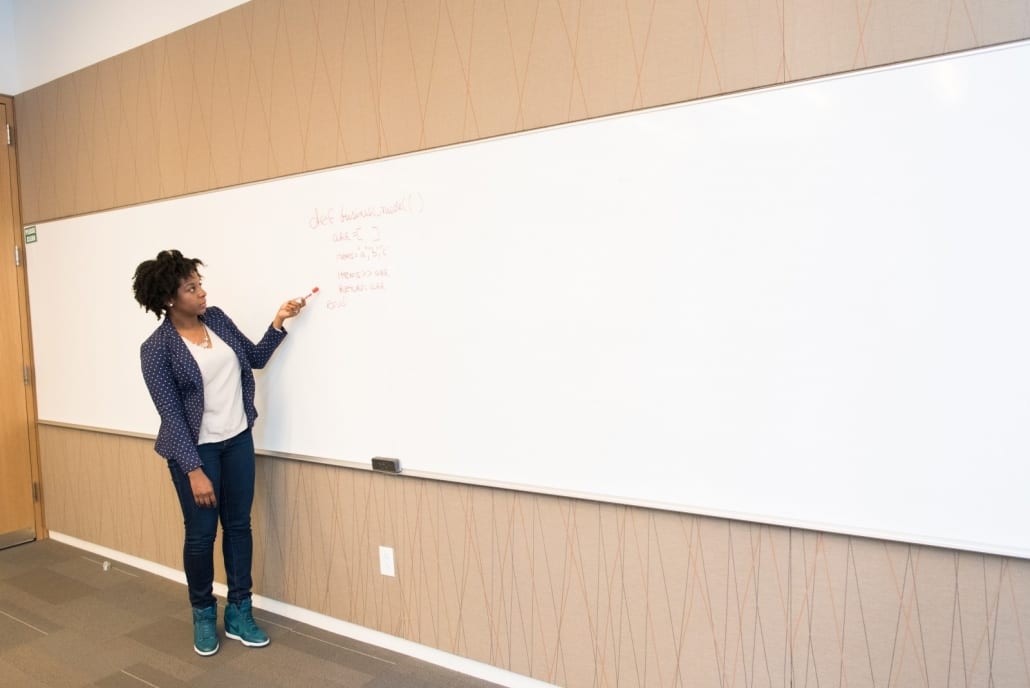Throughout your career teaching English, you are often exposed to the technology used to deliver your lessons.
Some technology can even run on autopilot these days.
You prepare lessons using videos, podcasts, and images that your students find interesting.
You adhere to pedagogical methodologies using technology to engage your learners.
However, there is one critical component missing…the classroom you are now walking into does not have access to the technology you are used to.
In fact, the only technology they do have (a computer) is dedicated to the admin office!
You have just stepped through a time warp from modern technology and teaching conveniences into a world where there are no classroom computers, projector screens, podcasts, YouTube, PowerPoint, iPods, iPads, or other electronic teaching aids that we often take for granted.
In fact, all you can see in your classroom is a whiteboard, chairs, windows, and four walls. What do you do now? What is your Plan B?
Here are a few fallback ideas for teaching in situations with little to no technology that may help you gain confidence in such situations.
The Whiteboard Is Your Friend.
Many if not most classrooms are equipped with whiteboards (some still even have blackboards).
Sadly, they are an oft-forsaken relic of the old days of teaching.
Now would be a good time to dust off the old whiteboard and find your whiteboard markers. Whiteboards can be excellent tools.
As an ESL teacher in the trenches, it is always good to have at least one or two markers in your teaching bag.
Use your markers to draw images for your learners to understand nouns, actions, or even concepts.
You can use the whiteboard to show connections between school and life for example.
Try writing sentences for dissection (parsing), list words in similar groups, and to create charts to demonstrate relationships.
With a few flicks of your wrist, you can turn that dusty whiteboard into a powerful learning aid.
Handouts Work Great.
Amidst concerns over the environment, handouts are considered a thing of the past among many ESL teachers.
However, if you have access to a printer or a copy machine, handouts are still the old reliable in ESL classrooms.
As an English language teacher with limited means, handouts can be used strategically.
Copies of key pages (not all) of the lesson material can provide visual and technical assistance for key activities or instructions.
The teacher can provide handouts for group work, use handouts to stick on the walls for games, and use specific handouts for complex images that can be discussed.
The teacher need not give copies of handouts to each student in some cases.
However, they can use one handout held high to show the information and ask students to take notes.
It is important to be wise with your printing and copying because many schools or academies in low-economic areas do not have large budgets for such things.
The Web in the ESL Classroom – Teaching English with Technology
Develop The Artist In You.
A teacher who has drawing skills has an excellent resource already at hand.
Even drawing on a large blank piece of paper (an A4 paper taped together if need be) can show or demonstrate the language point.
This can speak a thousand words in English to your students.
Use your sketch to elicit 1,000 words of description or sentence construction—even make it into a game.
This game focuses on which team can express the most words that describe the image. This can be perhaps 100- 1000 words depending on the class dynamics.
Another version of the game is to narrate an image of one or multiple activities.
The group that provides the most accurate narration wins.
Teachers who invest a little time in drawing can become image-makers without technology.
Not only that, but teachers who can draw, or at least try to draw, are providing visuals for the learners in the class who cannot make sense of certain ideas.
Sometimes even writing words out is helpful, even without images.
Instead of talking as is the norm, the teacher can draw or write and engage their classes more.
Develop Your Acting Skills.
When you have nothing left, you have yourself. English teachers are often called “edutainers” in the classroom for a reason.
That means, sometimes, you will have to act things out so your students can follow along.
You may need to act out a dialogue stepping from one side to the next.
You also may need to change your voice, or even act out certain elements of dialogue to help learners visualize and hear the target language.
In that sense, who needs videos, right! Step outside your comfort zone, and do not be afraid to put on a little show when needed.
You might be pleasantly surprised at how your class members respond.
Use The World Around You.
Maybe you are reading this and thinking, “I can’t act, and I can’t draw; making copies is problematic, and the whiteboard is unusable.” What to do in such cases?
When there are no other options available, use the world around you for your teaching enhancements.
You can ask the students to look outside the classroom and describe what they see. Try asking them to narrate what they see.
In addition, you can point to objects or specific scenes and have students explain what they see in English.
You can then ask them to act out what they see, then speak about what they see.
It could be something as simple as a garden outside with flowers.
Encourage students to narrate the gardener’s actions or to describe the sky.
They can also describe the clothing of people walking outside, and the list goes on.
The benefit is that these are familiar concepts for students to start with. It is then that the teacher can aid them in branching out to the unknown (Krashen’s I + 1).
It is literally a world of possibilities!
If you are transitioning from a high-tech to a low-tech environment, it is not the end! It is but a new experience for you to master as an ESL teacher and to gain more confidence.
Keep these ideas in mind to be better prepared to step into a low-tech classroom.
Students want to use English not just to see English being used (as we share with our technology).
They do not just want to be entertained but enabled to communicate. The frills come later.
Use basic elements to gain interest, to engage your learners, and to aid in teaching even without the technology of modern classrooms.
Remember, the important part is not the technology that you have but how to use what you have available for the benefit of your students.
Recommended Reading:
Pros and Cons of Teaching English with Technology: It’s About Authentic Communication!
How to Use the Board at Different Stages of a Communicative Lesson
Using the Internet in TESOL: Video, Task-Based Learning, Apps, and More!







